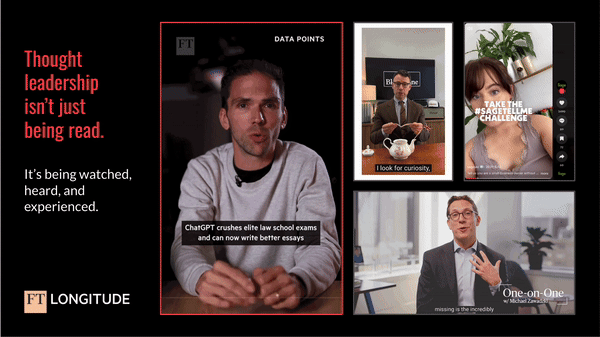
Politics has always shaped the business landscape.
From Cold War crises to post-9/11 geopolitics, companies have long operated amid uncertainty. But what makes today different is not the level of volatility. Instead, it’s the proximity of political issues to the day-to-day business environment.
In 2025, politics is no longer something that sits outside the walls of the firm. It’s inside them.
In the public eye
In the past, news about political events was mediated by journalists, editors, and formal corporate channels. Today, political developments land on our screens instantly and unfiltered, via a mix of traditional reporting and social media.
People aren’t just receiving information faster, they’re used to reacting, commenting, and amplifying it in public. This cultural shift blurs the boundaries between personal and professional discourse. Whether it’s a Supreme Court ruling, a government crackdown, or a viral protest image, employees are more likely to bring their views and expectations into the workplace.
In leadership expectations
CEOs were once insulated from political positioning. Today, they are routinely asked to comment but can then be criticized for either speaking up or staying silent. The line between reputation management and political engagement has blurred.
In operations
Global supply chains now cross regulatory regimes shaped by geopolitical fracture. Sustainability standards, AI ethics, and sanctions policies are not just compliance issues. Instead, they are brand, investor, and stakeholder issues.
This is why politics feels closer in 2025: it’s embedded in the systems companies use to lead, communicate, and define their values. Leaders can no longer rely on distance or silence as a shield.
This tension sits at the heart of modern B2B thought leadership. As we heard in a recent roundtable we hosted, senior content marketers are grappling with the same core question: How do you tackle political issues in thought leadership without sounding ‘political’?
The politics paradox
This tension plays out in two directions:
On the one hand, companies are deeply affected by issues that have a political dimension, from tariffs and tax regimes to employee and customer expectations around issues like racial justice or sustainability.
On the other, many B2B brands instinctively avoid anything that might “smell” political, fearing reputational blowback or internal conflict. The result is a landscape where political issues are both inescapable and untouchable.
Not all black and white
Some organizations embrace themes that have a political dimension. Patagonia, for instance, has explicitly tied its environmental mission to social justice, even amid the so-called ‘anti-ESG backlash’.

Its core values state, for example, that it looks:
“to address the deep connections between environmental destruction and social injustice”
Patagonia
Others engage selectively. Some weighed in on the Ukraine conflict but avoided statements on domestic unrest. Appetite often varies by geography, ownership structure, or stage of growth. For many large companies, there is significant sensitivity today, even if not outright avoidance. However, there are issues where it is impossible to remain silent.
To navigate this tension, two principles emerge:
1. Be strategic
Not every issue demands a response. But some politically charged topics are simply unavoidable: tariffs, labour and tax laws, sustainability regulations. These aren’t political stances. In fact, they’re business imperatives. The smart move is to define what counts as strategic and be ready to lead when those topics intersect with the brand.
2. Reframe, don’t retreat
Even polarizing issues can be discussed if reframed through an apolitical lens.
Take this example. As Reuters reported in 2024, employees at large tech companies overwhelmingly supported Kamala Harris over Donald Trump. For companies whose executives voiced support for Trump, this created a values mismatch between leadership and workforce, with potential consequences for morale, retention, and culture.
more donations to Harris than Trump from Alphabet employees and families
more donations to Harris than Trump from Meta employees and families
more donations to Harris than Trump from Apple employees and families
Rather than address this as a political story, it can be reframed as a leadership challenge: How do CEOs manage multi-generational, values-diverse workforces? In other words, this becomes a conversation about leadership, values and internal alignment, not a partisan issue.
Watch our on demand webinar if you’d like to explore how to connect with today’s multi-generational workforce.

The opportunity for B2B marketers
Politics in B2B may be a reputational “minefield,” but it’s also a content opportunity. Some of the most engaging and high-impact thought leadership starts where business and politics intersect. But to be credible, it must be:
- Rooted in insight, not opinion
- Framed around strategy, not ideology
- Delivered with restraint, not provocation
In short, don’t avoid political issues: simply reframe them.
If today’s political currents are making your brand voice harder to steer, or if you’re wondering how to lead with clarity without stepping into the fray, we’re here to help. Our team works with marketing leaders to shape thought leadership that doesn’t shy away from complexity, but navigates it with purpose and nuance.
Get in touch to start a conversation about turning political shifts into credible, compelling campaigns.
Sign up to the newsletter
We help organisations stand out, speak with authority and spark inspiration, so change can happen. That’s real intelligence with influence. Sign up to our newsletter to get regular updates.
Subscribe






 Back
Back

 Book a meeting
Book a meeting
 Book a meeting
Book a meeting


 View Peter’s profile
View Peter’s profile

